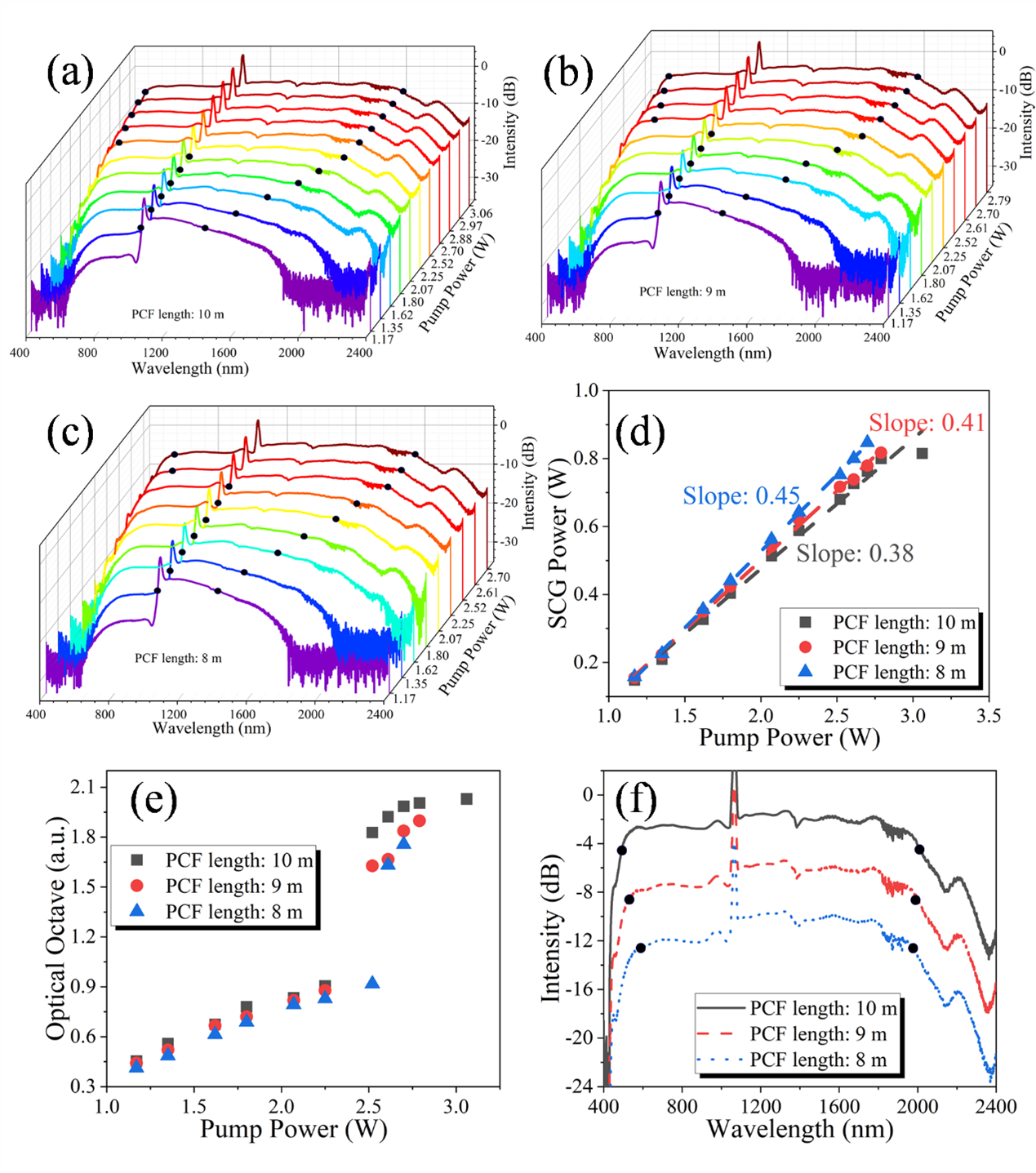
Researchers report the all-fiber ultraflat supercontinuum
A research team from Shanghai Institute of Optics and Fine Mechanics (SIOM) of the Chinese Academy of Sciences (CAS) recently reported an all-Fiber ultraflat supercontinuum generation in photonic crystal fibers covering 492.4 - 2009.8 nm with 3-dB bandwidth. The results were published in Optics and Laser Technology.
Supercontinuum (SC) light sources are of significant value in optoelectronics owing to their ultrabroad spectrum, high beam quality, and modular design. Since the first application of an SC light source, researchers have extensively studied the mechanisms of SC light sources in waveguide characterization, optical coherence tomography (OCT), and nonlinear optics to establish successful cases. Despite the broadened spectral bandwidth of SC light sources, insufficient spectral flatness remains a critical limitation. Spectra must span at least one octave to achieve self-reference locking. These demands drive SC source development toward the co-optimization of a broad spectral range and high flatness
In this work, researchers proposed an approach to realize all-fiber ultraflat SC generation based on enhanced soliton–dispersion wave (DW) interaction and spectral filtering. High nonlinearity fibers (HNLFs), as the key components for SC generation, are particularly important in design and fabrication. In their experiment, they first employed the control variable method to screen the photonic crystal fiber (PCF) end-face structures suitable for enhanced soliton–DW interaction. The group velocity and phasematching conditions between the solitons and DWs in the PCFs were comprehensively considered. Subsequently, simulations of the SC generation based on the end-face structure of sample #2 were conducted. The influences of different pulse widths at the same pump peak power on the SC were investigated to select a 20 ps pulse duration for pumping. A PCF with an end-face structure analogous to sample #2 was fabricated for and employed in the SC experiments.
Under the same experimental conditions, the evolution of an SC spectrum with enhanced pump power was recorded as the PCF length was trimmed from 10 to 8 m. When the fiber length was 10 m, and the pump power was 3.06 W, the long period fiber grating (LPFG)-based spectral filter could achieve ultraflat SC generation. The 3-dB bandwidth of the output spectrum was extended to 1517.4 nm, covering a range from 492.4 to 2009.8 nm. The corresponding optical octave reached 2.02. To their knowledge, this is the largest optical octave obtained using all-fiber SC sources with a 3-dB bandwidth.
This all-fiber solution integrates compactness, high stability, and environmental robustness and thereby demonstrates great potential use in multi-wavelength spectroscopy, hyperspectral radar imaging, optical clock systems, and optical coherence tomography.

Figure (a) Experimental results of SC generation using under 10 m-long, (b) 9 m-long, and (c) 8 m-long PCFs. (d) Comparison of flat SC spectra for different PCF lengths. (e) Relationship between pump power and optical octave. (f) Output SC spectra under different PCF lengths.
Article website:https://www.sciencedirect.com/science/article/abs/pii/S0030399225006425
Contact:
WANG Tianxing
Advanced Laser and Optoelectronic Functional Materials Department,
Shanghai Institute of Optics and Fine Mechanics, CAS
Email: wangtianxing@siom.ac.cn